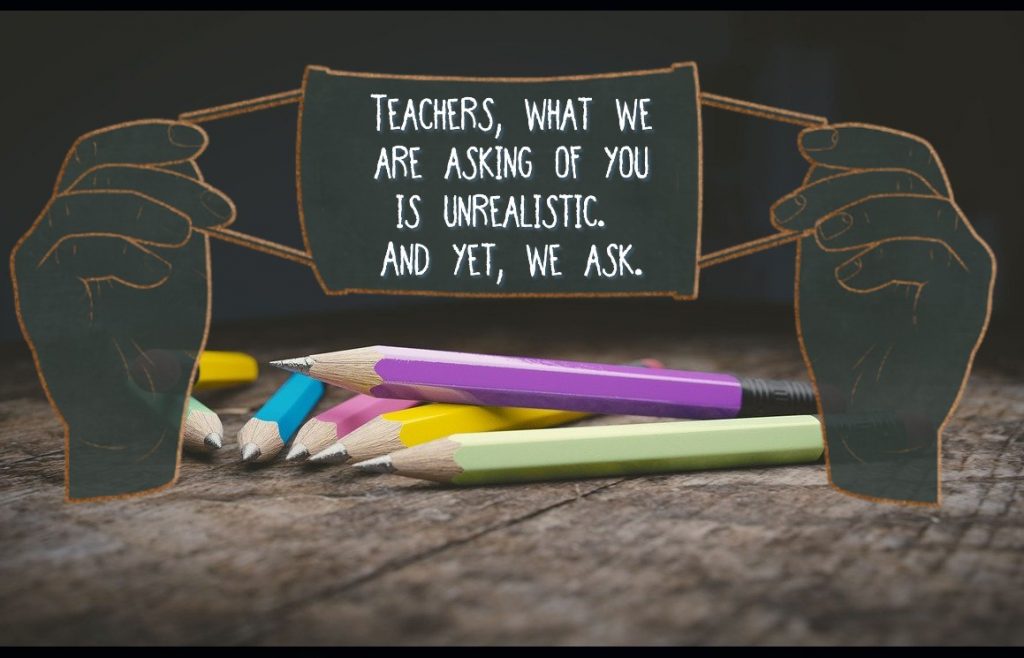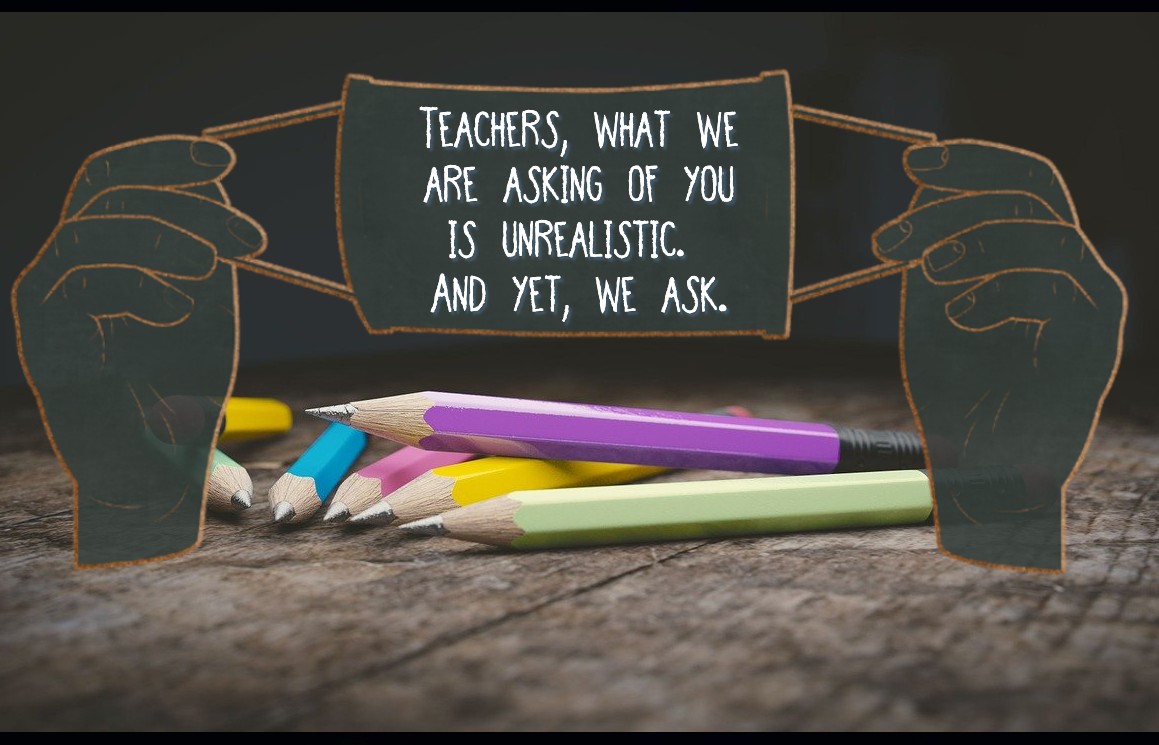The first in a series. The second: Parents, this is hard. The third: Administrators, we apologize in advance.
May grace be upon you, teacher…
Let’s do the math.
We are trying to make 2469 + 64,892 add up to 4. It doesn’t.
The. Math. Does. Not. Work.
Think about it. We are asking teachers to:

- teach students while they implement pages and pages of new regulations, restrictions and new procedures only just given to them
- teach the students these new ways of being at school when they are just learning them themselves
- let go of so many creative strategies that use to engage students–learning centres, group projects, toys, puzzles, games because students can’t touch things other students might touch. This is the fun stuff–it is what makes teaching rewarding
- ensure that students who have never worn masks will now wear them–some of whom find masks itchy and uncomfortable and some are just mischievous and push limits
- deal with all the usual beginning of the year anxieties of children–be supportive to the children who would be anxious no matter what they year
- deal with the anxieties of the pandemic that the children feel–the children hear the grownups arguing about whether school should happen! Children are experiencing the stress of the pandemic–and often use their behaviour to let the adults know how hard they are finding it. It is likely they will be more irritable, stressed, distracted and attention seeking–because they are dysregulated.
- contain the energy of children who need to move and usually go up and down the hallway to the library, the music room, the lunch room etc–these children will be seated all day in the same seat. They won’t have opportunity to get the wriggles and jiggles out between classes–they will be wriggling and jiggling in their seats.
- be amateur sleuths to notice runny noses or dry coughs and send the child home out of cautious concern of COVID-19 knowing that they quite possibly create havoc in the family as the parents scramble to make arrangements for days at home
- manage all the teaching amidst their own possible health challenges, and that of their family–knowing that they risk catching COVID-19
- potentially scramble if their child, in another school or classroom gets sent home with the sniffles
- deal with students who have not sat in a school desk since March. Some students stopped learning in March–some regressed because they haven’t done anything since then, and some may have leapt forward in their abilities as they flourished with home learning. They will need to teach all these different learning abilities
- be with students for whom, in the past, school has been their only safe place, the source of their only good meal–and school abandoned them in March. Trust will be hard.
- facilitate student learning not only in the class, but for those who have been sent home or need to stay at home.
- face the reality that they will likely get the a runny nose or dry cough increasing the burden of their school staff. Teachers will tell you how often they get ill teaching little “germ spreaders”
- do all the usual planning that takes hours and hours to give well thought out lessons to eager-but-easily-distracted minds–and be ready to pivot to alternate learning methods on short notice–all remote, part time attendance or ??
What have I missed?
You see? What we are asking is not at all realistic.
And yet, teachers start teaching next week.
Please join me in letting a teacher know that you care and have deep compassion for them.
I talked with Dahlia Kurtz on her show The Goods on CFRA in Ottawa this week about the anxiety of return to school this year, holding space for the discomfort, and treating each other gently:







Write a Comment